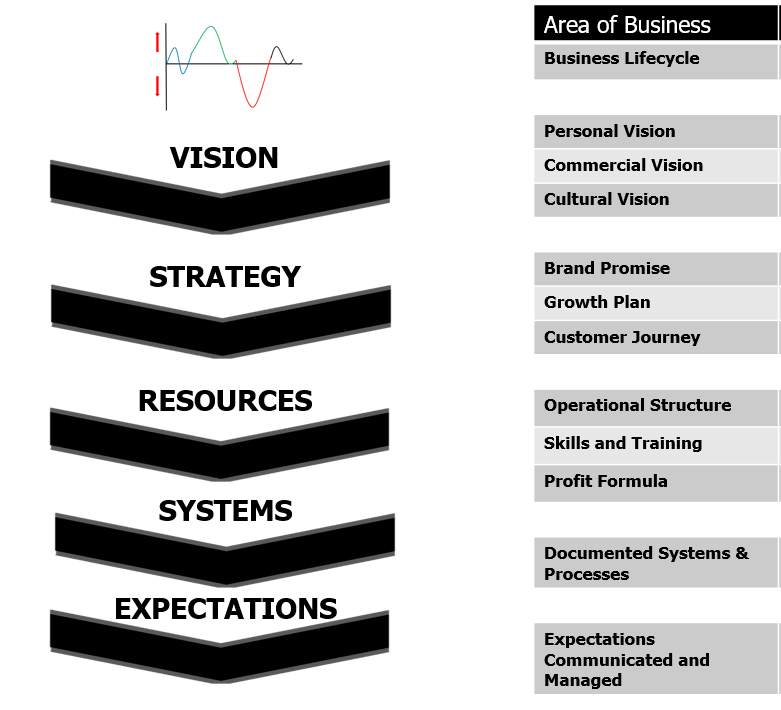Context and the 5 Whys. In Blackboard Fridays Episode 3, Jacob talks about Leadership. Need this implemented into your business? Talk to the international business advisor who can do exactly that – Contact Jacob, Learn More, or Subscribe for Updates.
WHO IS JACOB ALDRIDGE, BUSINESS COACH?
“The smart and quirky advisor who gets sh!t done in business.”
Since April 2006, I’ve been an international business advisor providing bespoke solutions for privately-owned businesses with 12-96 employees.
At this stage you have proven your business model, but you’re struggling to turn aspirations into day-to-day reality. You are still responsible for all 28 areas of your business, but you don’t have the time or budget to hire 28 different experts.
You need 1 person you can trust who can show you how everything in your business is connected, and which areas to prioritise first.
That’s me.
Learn more here. Or Let’s chat.
TRANSCRIPT
Is your business stuffed? Are you stuffed? Let’s be honest. One of the realities of being a business owner is that the longer we’re in business – the more team, the more clients, and even the more money that we’re bringing in – the more stuffed we get.
Today’s video is about helping you to get unstuffed and to give you the helicopter view that sometimes is hard to find in a business. Most importantly, it’s to give you a useful tool so you can stop working in the business and start working on the business.
This is a tool that we call Context. What is the Context that sits around all the decisions that are made within your business?
If you’re clear on why you’re doing certain things, and if your team are clear about why you’re doing certain things, then a whole lot of the issues that show up in the ‘stuff’ will go away.
Partnerships and Context
Let me give you a simple example that I see in a lot of partnerships. They sit down and decide that “Growth” is a priority for the business.
One of them goes and hires a new staff member. One of them goes and fires a staff member. And yet both think that that’s the “Growth Strategy”.
For the first partner, “growth” meant more people, more revenue that we can generate, more clients that we can service—that’s growth, isn’t it? The other partner saw that getting rid of some overhead would “grow” profit. They were much more interested in the shorter-term benefits of growing profit, which is also one way of defining growth.
As business partners they had an issue down in the ‘stuff.’ They made very different decisions despite feeling aligned and that was because they really didn’t get to the heart of why — why do we want to grow? What do we mean by growth?
This is a decision that shows up in everything, from big strategic elements to who cleans the kitchen and who puts the paper back into the photocopier.
The Five Whys
You may have heard of The Five Whys (originally created within the Toyota management toolkit. Whatever the issue that shows up in the stuff, if you ask “WHY” five times you will eventually get to the very root cause of that problem.
This is a great tool – with the caveat that you had to be asking those questions in the right direction. “We missed a manufacturing deadline because Bob overslept because Bob had a fight with his spouse because Bob forgot Valentine’s Day because Bob doesn’t believe in manufactured holidays because when Bob was a boy his bike was stolen on Mother’s Day” doesn’t really get you to the root cause of the problem, for example.
What I do with my business coaching clients is provide a little bit more structure to make sure that those questions don’t go off on a vast tangent: This is my “Layers of Context” framework.

Most businesses try and fix problems from the bottom up. In fact, when we go into an organization, we would rather start right at the very top because if you can get clear from the very top and work your way down, it’s much easier. If you do find that your business is stuck in the ‘stuff’ and you’re struggling to get out, the five whys will take you on a journey up through this process.
I find it’s easier to understand the levels if we go top down.
The 5 Layers of Context in Business
At the very top of your business is your Vision. This is the highest context — the big WHY you decided to start this business or become a leader in this business.
Three key elements that sit at the Vision layer are:
- Personal Vision
- Commercial Vision
- Cultural Vision
Your personal beliefs guide and empower the purpose and mission for this business, so it’s crucial to understand why you are in business for yourself. Following from that, what are your commercial goals – the dollars and cents objectives that you’re looking to build?
And what is the cultural experience that you’re aiming to create for the business, the experience you want you and your team to have when they come to work every day? If you have those clear, it makes an awful lot of other decisions so much easier.
For many businesses, especially those that have been for around for a while, those decisions and those contexts have wavered. If you’re clear on the vision, you can then get clear on the strategy you need to take you there.
Three elements to the Strategy are:
- Growth Plan
- Brand Promise
- Customer Journey
Regarding your Growth Plan, what are the specific steps to take you from where you are now to where you want ahead in the future?
Unlike what some people will have you believe, you do need a Brand and Marketing Strategy – a presence in your marketplace whether you’re selling retail or B2B. You need to be famous for something to help guide all the elements that sit below.
The third element of strategy is the Customer Journey. This is a critical element for modern businesses because our customers have more choice than ever before. Mapping the customer journey at that strategy level helps get you clear on what are the growth steps you need to move forward.
Once you have a documented vision and a clear strategy moving forward, you then get into the Resources within your business. This is where a lot of the frustration can show up.
Three elements to resources are:
- Operational Structure
- Learning & Development
- Profit Formula
Are you consciously aware of the operational structure that you have in place in your business? Do you have the right people doing the right job at the right time?
Secondly, skills and development. Do your team have the right skills? Something I see in growth businesses most of all is a loyal team member who has been promoted above their level of skill. Your choice in that situation is difficult – either work on training that individual, or you can bring in somebody else to sit above them. Neither is an easy decision, but will solve the problems that are created when you’ve got the wrong person sitting in one of those roles.
The third element that sits in resources is your Profit Formula. Revenue is vanity, profit is sanity, cash is reality and for lot of businesses don’t have the financial fundamentals at a resource level to make sure that they’re making money every month.
Below the Resources layer of context you start to get into some of the ‘Stuff’, the day-to-day elements that run your business. These are still important because this is where your business happens, but they are less instructive for your team.
Systems and Processes don’t need to be a mammoth effort unless you’re a mammoth business. However, I find a lot of businesses just do things the way we’ve always done. Losing one staff member can create havoc because that person was the only person who knew how to do certain things. They didn’t have the systems and processes in place.
One of the fundamental issues that shows up, particularly if we’re working from the bottom up, is Expectations. Are you and your team clear about all the expectations about who needs to do what? Are those expectations fully documented and have they been communicated to the team?
To Summarise
If you have a clear Vision, a Strategic roadmap to get you there, then you can structure the Resources appropriately and have them drive the Systems and Processes that your business needs and set the right Expectations with every team member … to make sure that the Stuff is a whole lot easier.
A Step Too Far?
Sometimes starting at the top can be a step too far.
If you and your business really are stuffed, sometimes you do just need to start at the bottom and slowly work your way up. When something goes wrong, you need to ask why. Were the expectations misaligned about what needed to happen and why? Were they documented? Were they communicated? Or were assumptions made? Once you’ve identified where the expectations mismatch, you can ask why there was such an expectations mismatch. That will direct you to the system or process that was in place, or not in place, that should have informed those expectations.
Once you’ve identified the specific system that was an issue, you can ask why that created a problem, which brings you to the resource mix. Was the person responsible spread too thin? Did they not realize they were responsible? Were they focusing on other elements of the profit formula?
Once you’re clear about the resources, people and technology that caused the issue, you can ask why that created the issue which will bring you up to the strategy. Which part of your strategy to move in that direction missed something that created this issue down? Do you need to change that strategy or is it as simple as re-communicating that strategy– reconfirming it so the team understand it?
If you’ve got an issue with this strategy level, if that’s unclear or it’s not supporting your business, you need to ask why one final time which brings you up to the vision. Was it your own limiting beliefs that created that issue? Was it misalignment of misunderstanding of the commercial goals? Was it something sitting in the culture of your business at a high level that created these issues all the way down?
Sometimes you’ll find a quick fix at one of these levels. I’d encourage you to keep going, ask all five whys, move up the different layers of context to get to the root cause because solving the problem here will fix so many more issues in the stuff and you’ll suddenly find that a business that had you stuffed has you excited once again you.
NEXT STEPS
Want to learn more about how this can apply to your business? It costs nothing to chat:
- Email me jacob@jacobaldridge.com (I read them all)
- Call, Text, or WhatsApp me +61 427 151 181
- Or just Subscribe https://jacobaldridge.com/about/subscribe-to-jacob-aldridge-com/ to stay in touch





[…] preparing your accounting reports, there are often two competing Contexts: “Valuation Maximisation” and “Tax […]
[…] Episode 3, Context and the 5 Whys – https://jacobaldridge.com/business/context-and-the-5-whys/ […]
[…] communicated Expectations are the first layer of Context [https://jacobaldridge.com/business/context-and-the-5-whys/] and the first place to look when Stuff is going wrong in your […]